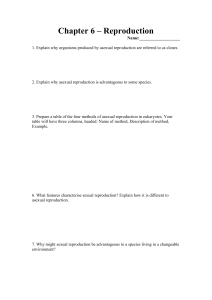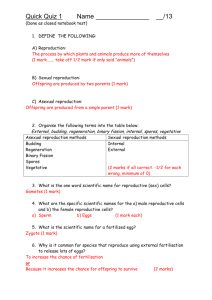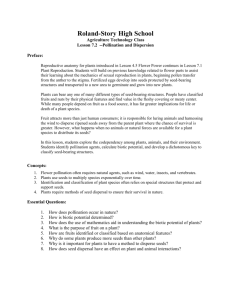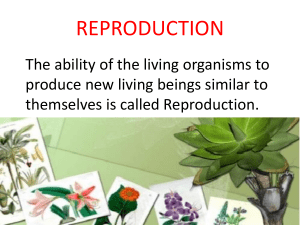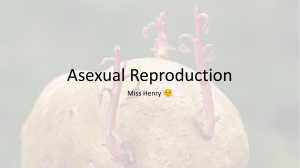Reproduction in Plants: Class 7 Assignment
advertisement
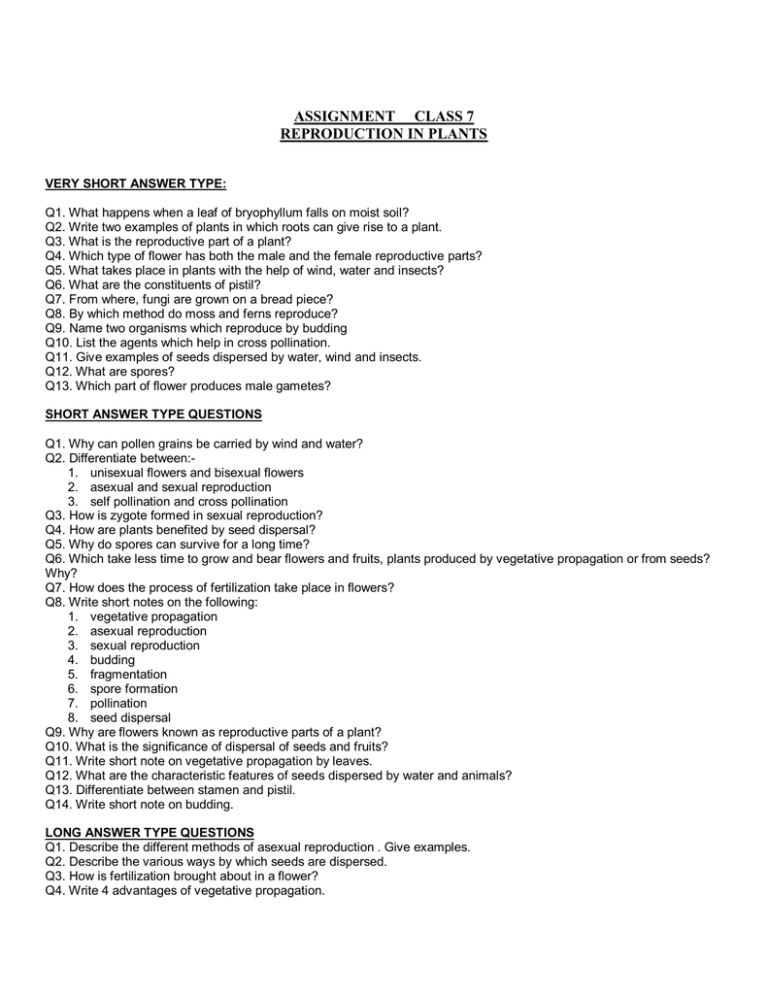
ASSIGNMENT CLASS 7 REPRODUCTION IN PLANTS VERY SHORT ANSWER TYPE: Q1. What happens when a leaf of bryophyllum falls on moist soil? Q2. Write two examples of plants in which roots can give rise to a plant. Q3. What is the reproductive part of a plant? Q4. Which type of flower has both the male and the female reproductive parts? Q5. What takes place in plants with the help of wind, water and insects? Q6. What are the constituents of pistil? Q7. From where, fungi are grown on a bread piece? Q8. By which method do moss and ferns reproduce? Q9. Name two organisms which reproduce by budding Q10. List the agents which help in cross pollination. Q11. Give examples of seeds dispersed by water, wind and insects. Q12. What are spores? Q13. Which part of flower produces male gametes? SHORT ANSWER TYPE QUESTIONS Q1. Why can pollen grains be carried by wind and water? Q2. Differentiate between:1. unisexual flowers and bisexual flowers 2. asexual and sexual reproduction 3. self pollination and cross pollination Q3. How is zygote formed in sexual reproduction? Q4. How are plants benefited by seed dispersal? Q5. Why do spores can survive for a long time? Q6. Which take less time to grow and bear flowers and fruits, plants produced by vegetative propagation or from seeds? Why? Q7. How does the process of fertilization take place in flowers? Q8. Write short notes on the following: 1. vegetative propagation 2. asexual reproduction 3. sexual reproduction 4. budding 5. fragmentation 6. spore formation 7. pollination 8. seed dispersal Q9. Why are flowers known as reproductive parts of a plant? Q10. What is the significance of dispersal of seeds and fruits? Q11. Write short note on vegetative propagation by leaves. Q12. What are the characteristic features of seeds dispersed by water and animals? Q13. Differentiate between stamen and pistil. Q14. Write short note on budding. LONG ANSWER TYPE QUESTIONS Q1. Describe the different methods of asexual reproduction . Give examples. Q2. Describe the various ways by which seeds are dispersed. Q3. How is fertilization brought about in a flower? Q4. Write 4 advantages of vegetative propagation.


